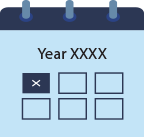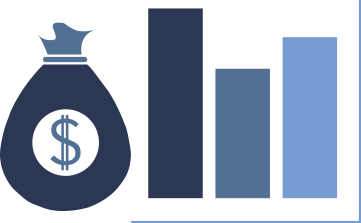Life

What Is Life Insurance?
Life insurance provides a tax-free lump sum of money to your loved ones after your death so you can make sure they’re able to pay everyday bills, children's college costs, or final expenses. A life insurance policy provides affordable financial protection — and invaluable peace of mind — to people with friends or family who rely on them.
What are the different types of life insurance?
Not all life insurance policies are created equally. How long the policy lasts, the cost and extra provisions depends on the type of coverage. Broadly speaking, life insurance is divided into two different types: term and permanent categories
Term life insurance Term life lasts for a predetermined period of time, known as the term. When the term is up, the policy expires. This is usually the most affordable type of life insurance, and lasts only as long as you need it to cover debts and provide for beneficiaries.
Permanent life insurance Permanent insurance doesn’t have an expiration date and lasts for as long as the policyholder pays the premiums. Permanent policies also have a cash value component that acts as a sort of investment vehicle that can be borrowed against. Permanent life insurance policies include whole, variable, universal and variable universal life.
Life insurance basics:

You choose how many years your policy will last (the term) and the coverage amount that will be paid out if you die (the death benefit).

You pay for the policy in the form of monthly or annual premiums. You can compare quotes from multiple life insurers to see the different monthly rates they charge for a policy.

If you die while your life insurance policy is in effect, its death benefit is paid out to your chosen beneficiaries, who can use the money to pay off debts, cover expenses, like your monthly mortgage or rent payments, and more.
Common term in life insurance:
 Some concepts are the same across multiple life insurance types. No matter what type of insurance you choose, here are some basic definitions you need to know.
Some concepts are the same across multiple life insurance types. No matter what type of insurance you choose, here are some basic definitions you need to know.
* Policyholder — The owner of the life insurance policy.
* Premium — The money a policyholder pays, monthly or annually, to keep a life insurance policy active. If it’s not paid, the policy lapses.
* Death Benefit — A (usually tax-free) lump sum of money paid out upon the death of the policyholder.
* Beneficiary — The person(s) or institution that receives the death benefit.
* Rider — A contractual modification to a policy to customize certain provisions.
* Underwriting — The process by which an insurance company looks at an applicant’s financial and health history to set the final premium rate.
Types of life insurance
At the end of the day, most people will choose between two different types of life insurance: term life insurance, which lasts for a set amount of time before expiring, or whole life insurance, a type of permanent life insurance that has an investment-like cash value component and stays in effect for as long as you make the premium payments.
Whole life insurance can be good for people with complex financial situations or estate planning needs, but term life is the right choice for most shoppers because it’s the cheaper and more straightforward option.
Whole vs. term
Most shoppers have to decide between term and the most popular type of permanent life insurance which is whole. Term life is the right choice for a majority of people because it’s affordable and straightforward. However, whole life, with its cash value and permanent status, can be useful for people with complicated finances or in affluent household.
Term life insurance pros & cons
Pros
- Term life is straightforward and policies are easy to understand, so you don’t have to worry about hidden fees, exclusions or risks.
- Term is the most affordable type of life insurance.
- You can cancel a term policy before it expires without losing any value.
Cons
- When the policy expires, so will your coverage. If you still want insurance, you’ll need to shop for a new policy or convert your policy into a form of permanent life insurance.
Whole life insurance pros & cons
Pros
- Whole life doesn’t expire, so you can keep it for as long as necessary.
- Useful as part of a customized personal finance or estate planning strategy, thanks to the cash value component.
- It works as a forced savings vehicle.
Conts
- Whole life is far more expensive than term — sometimes up to six to 10 times the cost.
- Because of the cost, people often buy less coverage than they need or surrender the policy early.
- The interest rate you'll receive on the cash value is likely less than you’d get if you invested it in other ways.
- Whole life is more complicated than term life. The surrender value of the policy changes with time, which is something to pay attention to when accessing the cash value
Who needs life insurance?
If you have someone who depends on your income or services, you likely need life insurance. Life insurance policyholders commonly include:
 Students
Students
Did you know that your parents may be on the hook for your debt if they cosigned your student loans? Anyone with cosigned debt should consider life insurance, even if you’re young.
 Spouses
Spouses
Marriage complicates finances, and you’ll feel better if you know your significant other is taken care of regarding any shared debt or future financial plans.
 Parents
Parents
whether it’s diapers or tuition, kids are expensive. A life insurance policy ensures their costs are taken care of from cradle to college.
 Homeowners
Homeowners
Mortgages are the biggest, longest-lasting debt most people will take on. A good rule of thumb is to have a life insurance policy that lasts as long as your mortgage. It's not uncommon for a policy to last 20 or 30 years.
 Business owners
Business owners
A smart business owner will have an insurance policy so their partners can keep the company going even after you’re gone.
You might consider life insurance even if you don’t fall into one of those buckets. For example, you can use a death benefit to leave behind a charitable gift to a museum or foundation.
What are the differences between term & whole life insurance policies?

Because you can get a higher death benefit for a lower price, term life insurance is best for most people.
Duration
Term: 1-30 years
Whole: Life
Term life insurance lasts for a set number of years decided on when you purchase the policy. Terms are between 1-30 years and usually come in increments of 5 years.
This is ideal for most people: After 30 years, many people have fewer financial obligations. Their mortgage is paid off. Their kids don’t live at home anymore, and they can self-insure with savings. They won’t keep paying for a policy they don’t need.
Whole life insurance (and all types of permanent life insurance) lasts for as long it’s paid. The benefit is indefinite coverage: If you find yourself 30 years into the policy and realize you still need coverage, you don’t have to worry about the policy expiring.
If you have a term life insurance policy you aren’t ready to give up, most policies come with a default term conversion rider that turns the term policy into a whole policy without you needing to go through the underwriting process again.

Guaranteed death benefit
Term: Yes
Whole: Yes
No matter what type of life insurance you choose, the life insurance company cannot alter the death benefit. The death benefit is usually untaxed, so your beneficiaries don’t have to worry about receiving less due to taxes.
It’s important to note if you take out a loan on your whole life insurance policy and die while the loan is out, the death benefit may be used to pay back the outstanding amount, meaning your beneficiaries won’t get the full amount.
Cash value
Term: No
Whole: Yes
Term life insurance doesn’t have a cash value. This makes it easy to understand but means you don’t get any additional perks.
Whole life insurance has a cash value, and it’s relatively safe compared to other types of permanent life insurance. Whole life insurance offers a guaranteed cash value , meaning it has a minimum growth rate.
Other types of permanent life insurance can lose value over time depending on the wider market. However, whole life insurance is a conservative investment option and means you can likely find better returns with different investment vehicles.
All permanent policies can be surrendered for their current cash value after a certain number of years, at which point the insurer pays the accumulated cash value minus any loans and fees.
Premiums
Term: Can increase periodically or stay at a guaranteed level for the policy duration
Whole: Level
Term life insurance can come in two forms that affect cost — guaranteed level and annual renewable.
Guaranteed level term life insurance keeps premiums the same for the entire policy term, but renewable annual term life insurance must be renewed periodically, each time raising the premiums.
Annual renewable policies are best for short coverage periods because premiums typically start low compared to guaranteed level premiums, but get higher later on.
Whole life insurance premiums are level — they stay the same no matter how long you have the policy.
What are the advantages of life insurance?
 It provides money tax-free
It provides money tax-free
The death benefit provided by a life insurance policy is a lump sum of money that’s tax-free. That means the whole amount goes to your beneficiaries – and they don’t have to plan their goals around receiving only a portion of the money thanks to taxes.
 It’s affordable protection
It’s affordable protection
While the exact cost of life insurance varies, for the most part, it’s pretty affordable. Consider this: A healthy 30-year-old male can expect to pay under $44 a month for a $1,000,000 term life policy. That’s about half the cost of the average internet bill. Since it helps pay for college, a house, retirement, and more, that’s money well spent.
 It’s an alternative investment option
It’s an alternative investment option
Term life insurance is straightforward, but the cash value of whole and other permanent types can act as a forced investment vehicle. A lot of whole, universal, and index universal insurance have a death benefit income rider that money convert for retirement income. A permanent life insurance policy might be the right path, if you’ve already maxed out other investment options like an IRA, have a 401k, a life insurance might work as an additional vehicle to diversify with many possible rider options to supplement retirement.
Why is life insurance important?

Financial planning is important, but if you’re the breadwinner and you die, it makes all of that planning moot. The meaning and importance of life insurance is the peace of mind it provides when it comes to:
* Protecting future plans like college and retirement for your beneficiaries
* Paying off debt like a mortgage or student loans
* Estate and inheritance planning to leave something behind for children, grandchildren, or charities
* Covering end of life expenses like funerals, which have an average cost of nearly $10,000

How much life insurance do I need?
Most people should aim for 10-15 times their income. Make 30k a year 10x equals 300k policy or 15x equals 450k policy
Affording life insurance
How much life insurance can you afford? A life insurance policy isn't of use to you if you can't afford it. That's why it's important to consider how much you'll be able to pay in premiums each month. Higher coverage amounts equal higher premiums.
First you will need to decide between term and whole life insurance. Term insurance lasts a set number of years and then expires; whole life insurance lasts as long as you pay the premiums. Whole life insurance can be six to 10 times as expensive as a term policy, so most shoppers — especially those on a budget — should opt for term insurance.
Thank goodness, term life insurance is more affordable than many people think.
Example, a healthy 32ish-year old male will pay $38.50/ per month for a $650,000 policy that last 20 years. You can also minimize the cost by opting for a smaller coverage amount or a shorter plan.
After you’ve purchased your policy, you may find later on in life that your needs have changed. In this case you can adjust your coverage with a rider. Insurance riders are provisions to your policy that could come at an added cost.
Who doesn’t need life insurance?
Low-income earners Those with a lower income may have a hard time finding room in their budget for a policy. However, term life insurance in particular is more affordable and to minimize cost you can opt for less coverage or a shorter plan.
Young singles
If you’re single, and don’t have kids, you probably don’t need that much life insurance. But you still might want to be prepared if that ever changes, since you’d net a lower policy while you’re still young and healthy.
Even if you’re single, you could always direct your life insurance plan proceeds to a charity or institution of your choice putting it as your beneficiary.
Group life insurance participants
Some workplaces offer subsidized coverage through a group life insurance plan, so you might not need to buy your own individual policy. However, you may find that the coverage provided by your employer does not meet your needs, so additional coverage can supplement your employer’s plan.
Self-insured
Those who are self-insured, or have the funds and means to stay afloat and provide for themselves and their family, may not need life insurance. This might be a retiree who is financially free and doesn’t support anyone, or the fabulously wealthy who have enough funds stashed away to provide for their entire family.